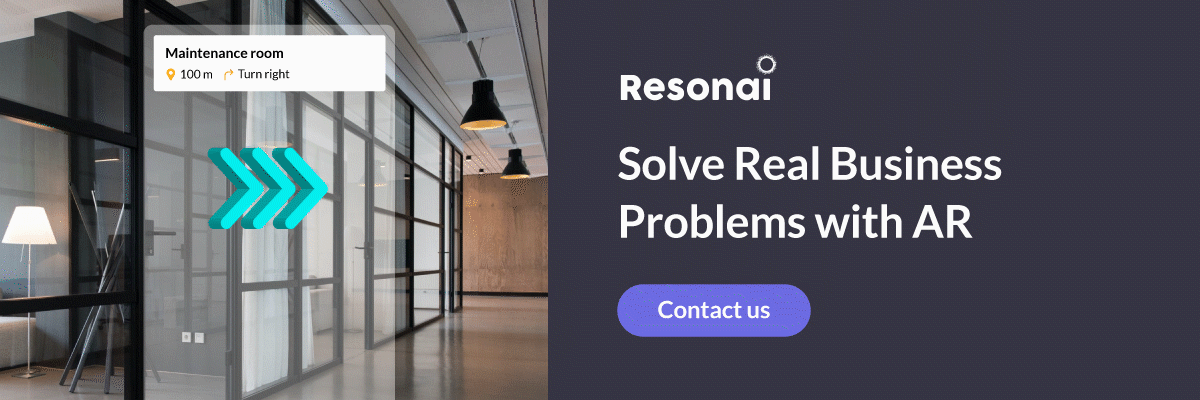5 Ways Digital Twins Are Revolutionizing The Construction & Real Estate Industries
By using digital twins in construction and real estate projects, businesses are tapping into the hidden potential of their properties.

Commercial buildings don’t exist exclusively in physical spaces any longer — thanks to new technologies, they extend into the digital sphere. As a result, everyone from architects to real estate agents are finding ways to leverage digital tools directly into their properties. Perhaps the most revolutionary solution is using digital twins in construction and real estate projects, creating countless opportunities and efficiencies that businesses couldn’t have dreamed of two decades ago.
Ready to dig deeper and learn more about digital twins? Check out "Digital Twins: The Ultimate Guide"
Jump to a section
Digital twins in construction
Architectural design
The phrase “digital twin in construction” may sound like a misnomer when the physical counterpart isn’t finished yet, but that’s not always the case. Architects and engineers often work from blueprints for previously completed facilities. These instances allow designers to digitize the existing physical spaces to analyze layouts, adjust workflows, account for modern safety considerations, and more.
Unlike traditional blueprints, digital twins are far more accessible and practical for each construction stage. When integrated with BIM software, these models help centralize and visualize project data in a way all participants can understand, including architects, engineers, owners, regulators, and other stakeholders. What’s more, this level of centralization eliminates the need for traditional project handoffs between each party — and the risk of data loss inherent in multiple handoffs. Over the long term, this also helps teams avoid bottlenecks when projects transition between planning and construction phases.
Scenario testing
While a great deal of planning and forethought goes into modern building design, it’s almost impossible to stress-test an entire facility for every eventuality. Any given structure may face extreme weather patterns, periodic earthquakes, or any kind of man-made disaster. Traditionally, architects and engineers would incorporate lessons from similar buildings into their designs. Still, it’s challenging to plan for every circumstance — such as the winter storms that overwhelmed Texas homes in early 2021.
Testing for every eventuality is almost impossible for physical buildings, but not a digital twin. These tools can help planners simulate and visualize an enormous range of conditions, such as the impact of different building materials or the long-term effects of local weather systems. These capabilities help us better understand the challenges a facility might face so planners can account for them from the earliest design stages.
Back to topDigital twins in real estate
Smart building capabilities
Digital twins do far more than assist with building construction — they also power smart buildings. Smart buildings are structures with integrated technology systems that users can manage remotely from a single interface. Digital twins act as the foundational structure for these systems, unifying Internet-of-Things enabled objects in a cohesive way.
We’ve explored smart buildings in more detail in other articles, but here are some specific benefits for stakeholders and facility managers using augmented reality in the commercial real estate space:
- Automation: Smart buildings excel at automating repetitive and inefficient processes. One simple example is lighting — with a few IoT sensors, digital twins can manage lights on a room-by-room basis, setting some to activate on a timer and others to respond to room occupancy.
- Remotely controlled safety systems: During an emergency, smart buildings can use a digital twin to activate fire alarms, lock or unlock safety doors, or facilitate other evacuation procedures. Personnel can also control these systems remotely without needing to go onsite.
- Indoor navigation: In large facilities, digital twins can support indoor navigation tools that provide directions to other locations. These features are particularly useful when onboarding employees or directing visitor traffic.
Scenario testing
Commercial real estate managers can also benefit from digital twin-based scenario testing, although they will apply it to different tasks. For example, where construction experts approach scenarios from an architectural perspective, commercial managers typically predict how visitors use their facility.
- Foot traffic: Businesses with a high volume of visitors typically want to analyze how people move through the space. This practice is common in retail stores and museums where managers must understand foot traffic patterns, chokepoints, and potential point of interest placements.
- Occupant behavior: Outside of foot traffic, managers should monitor how occupants behave within a given space. Will they stand in locations that disrupt other visitors? How will they position themselves around certain hot spots? This data is essential in the wake of COVID-19 as managers try to implement new social distancing policies through commercial design.
- Space utilization: Most commercial spaces need to be aware of available storage and display space. Digital twins can provide space utilization insights so managers can visualize the potential of a given area.
Virtual showings
Virtual property viewings are in high demand, due in no small part to COVID-19. Thanks to digital twins, commercial real estate agents can use AR tools to provide immersive and interactive online showings. These tours can be self-guided or directed by an agent, but both experiences are available from any home or office.
Of course, these tours can represent what a property will eventually look like in a digital environment. Real estate agents can apply design staging to add furniture, fixtures, and objects that help potential buyers envision the completed space.
Cost and time savings
As you can imagine from these applications, cost-savings are a significant benefit of digital twins — both in construction and real estate. According to one report from a construction provider, digital twins allowed the company to review projects online, reducing the number of onsite engineers from ten to one. This effect led to a corresponding 33% decrease in travel costs while expediting design work by approximately three weeks.
When a facility is operational, digital twins continue to increase efficiencies and reduce costs. When Resonai built such a system for the Moscow Trade Center, it helped power a preventative maintenance system on the organization’s existing hardware. Once implemented, the system drove a 44% decrease in repair times, leading to a significant boost in operational efficiency.
How Vera can help
The digital twin applications we’ve explored here aren’t just revolutionizing commercial real estate; they’re redefining how the industry will operate moving forward. Architects, engineers, agents, and facility managers can expect to use these tools on a regular basis.
The good news is Vera can help you make this transition. Whether you’re designing a new property, upgrading a smart building, or anything in-between, Vera can produce a 1:1 digital twin of your facility that meets your custom needs. What’s more, the team at Resonai provides AR solutions that emphasize customer experiences, reduce operational costs, and more.
Are you ready to learn more? Get in touch with Resonai today and set up a free demonstration.
Subscribe to Our Newsletter!
Read More
What are Digital Twins?
In the 1900s, it was rare for a building to have elevators, but now it’s impossible to imagine a...
How to Create a Digital Twin
Digital twins once acted as extensions of IoT technology, but in recent years they’ve become...
Facilities Management Software: The Essential Guide
The facility manager’s role might look different from building to building, but its core purpose...

